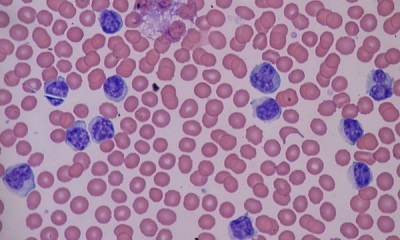The rate of mononuclear cells in the blood of a child
The blood in the child’s body is represented by the liquid part and several types of cells. Among them are normal and abnormal cells. Hearing that mononuclear cells were found in a baby’s blood test, parents first of all think about the disease, but are these cells abnormal or can they be present?
What is it
Depending on the type of such cells, they either directly destroy the harmful substance or infectious agent, or produce antibodies.
When and how are mononuclear cells determined
Mononuclear blood cells are determined during a general blood test of the child, when the leukocyte formula is deciphered. This formula indicates the percentage of all leukocytes, including monocytes and lymphocytes. Assessment of their level is important in such situations:
- If the child is examined according to plan, to exclude hidden diseases.
- If the child has complaints and the doctor suspects an infection or inflammation.
- If the child is prescribed treatment and the doctor needs to know its effectiveness.
Norm mononuclear
In the blood analysis of children under five years old monocytes normally make up only 4 to 10% of all white blood cells. From the age of 5, 4–6% in the child’s leukogram are considered to be a normal percentage of monocytes, and from 3–7% in the age of 15 years.
As for lymphocytes, immediately after birth they make 16-32% of all leukocytes, but already to the fifth day of life rise to 40-60%, remaining at this level the first years of life. Their number exceeds the percentage of all other white blood cells up to 5 years of age, when lymphocytes are 35-55%. Then their level decreases slightly, amounting to 30% to 45% of the total number of white blood cells in children over 10 years of age.
We recommend to watch the release of Elena Malysheva’s program “Live healthy!”, Which covers the topic of leukocyte formula:
Mononuclear level change
The reasons for the change in the number of monocytes in a child’s blood are:
Above the norm (monocytosis) | Below the norm (monocytopenia) |
Autoimmune diseases. Infectious mononucleosis. Polycythemia. Inflammatory pathology of the digestive tract. Leukemia Tuberculosis. Parasitic diseases. Infection with fungi. Poisoning with chlorine or phosphorus. Purulent processes. Injuries. Teething. | Surgery. Chemotherapy. Radiation sickness. Acceptance of hormonal drugs. Sepsis. Exhaustion. Injury. Strong stress. |
Changes in the level of lymphocytes in the blood of children are due to such reasons:
Above normal (lymphocytosis) | Below the norm (lymphocytopenia) |
Viral infections. Infection with parasites. Infections caused by protozoa. Tuberculosis. Bone marrow tumors. Exhaustion. Arsenic or lead poisoning. Autoimmune pathology. Hyperthyroidism. Splenectomy. Take some medication. | Congenital immunodeficiency. Acute surgical diseases. Strong stress. Aplastic anemia. Deficiency anemia. Measles. HIV infection. Treatment with drugs that suppress the immune system. Systemic diseases. Thymus lesions. Radiation sickness. Burns on a large area of the body. Tumors. Renal failure. |
Atypical Mononuclears
In addition to the normal cells for the blood analysis of a child, which include monocytes and lymphocytes, in diseases among them, pathological mononuclear cellsalso called atypical or virocytes. Such cells are modified mononuclear blood cells.
Normally, their content in the blood of a child is 0-1%, and an increase is observed in viral infections. Also, a slight increase in virocytes is possible with autoimmune processes, tumors or after vaccination. However, in such cases, the level of these cells rarely exceeds 10%.
The highest level of atypical mononuclear cells is diagnosed in infectious mononucleosis. This disease is caused by Epstein-Barr virus, so this disease is also called EBV infection. Detection of virocytes in the blood of children in the amount of more than 10% is one of the diagnostic signs confirming the presence of infectious mononucleosis in the patient.
Sometimes the white blood cells of a child with EBV infection consist of atypical mononuclear cells by more than 50%. It is also worth noting that within a few weeks after recovery, the level of virocytes in a child who has had an infectious mononucleosis will remain elevated.













